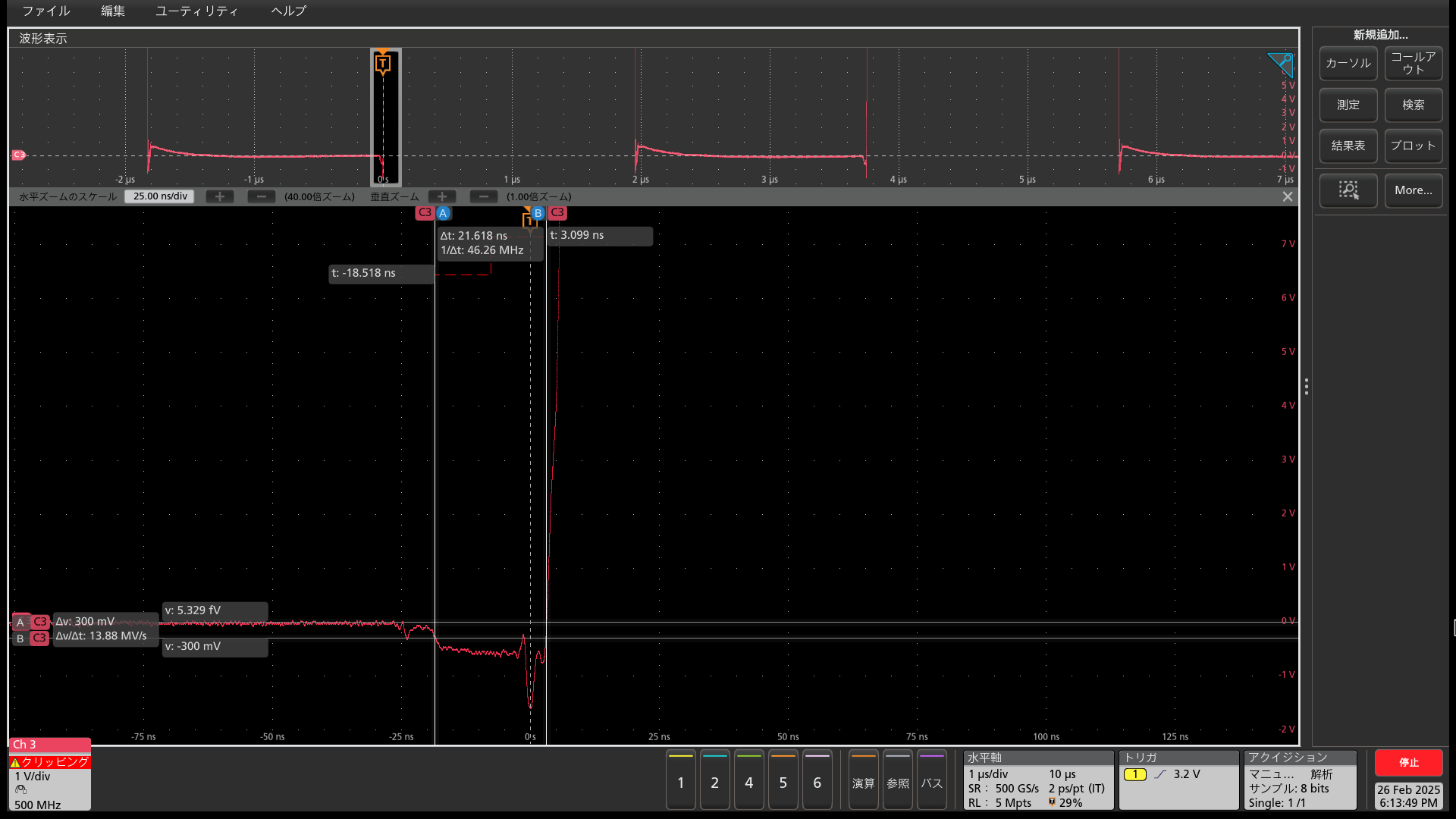Tool/software:
Hi,
The absolute maximum ratings list a relaxed specification of <20ns.
Is this because the LM5148's deadtime is 20ns (typ.)?
The figure below shows the waveform at the SW terminal.
The time it falls below -0.3V is more than 20ns, so it does not meet the absolute maximum rating.
I think this is because it was evaluated using an individual with a deadtime of around 22ns, but can we assume that there is no problem if it exceeds 20ns slightly?

Best regards,


